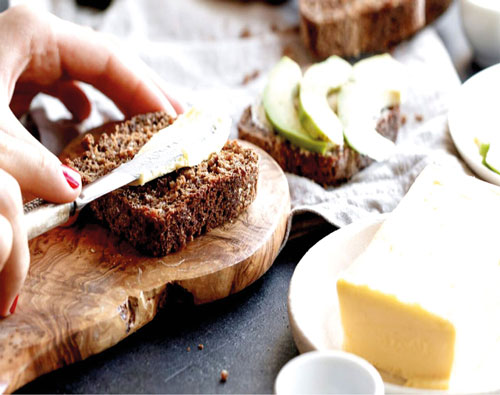A 2016 federal ban on trans fats has reduced the amount of unhealthy oils in some margarine prod-ucts. Researchers say this change has made some margarine products healthier than butter.
Experts say, however, that both types of spreads can raise cholesterol levels, so it’s important to have moderate levels of them in your diet. You won’t believe it’s not butter but margarine that may be the healthier choice between the two spreads.
A new study published in the journal Public Health Nutrition suggests that some margarine and marga-rine-like or whipped butter blends may be healthier than butter because federal regulators banned partially hydrogenated oil in 2016. The study was not funded by the margarine industry. Researchers in Minnesota examined 83 margarine and margarine-like or butter blend products as well as both salted and unsalted regular and whipped butter available in the United States in 2020.
None of the products contained trans fats, which are a dietary fat created when liquid oils are turned into solid fats. Trans fats are associated with raising LDL (bad) cholesterol levels while lowering HDL (good) cholesterol levels. Trans fats are also linked to heart disease, stroke, and type 2 diabetes.
Before the ban, trans fats could be found in many margarine products. Researchers said they found less saturated fat and cholesterol in margarine and butter blend products compared with butter.
This means the margarine products the researchers examined are more aligned with current dietary guidelines for heart-healthy foods. Researchers also reported that softer tub and squeeze tube margarines contained less saturated fat than stick margarines.
Marion Nestle, PhD, MPH, a professor of nutrition, food studies, and public health at New York Univer-sity, told Healthline that margarine and other similar foods are artificial products designed to substitute for butter.
She noted that many of these products meet the definition of ultra-processed. Her personal food rule is to never eat anything artificial because, she says, we did not evolve to eat industrial ingredients.
“I try to avoid them as much as possible, so marga-rines are off my dietary radar,” Nestle said. Nestle mentions she prefers butter to margarine, but just in moderation. “It is real food, minimally processed, with one ingredient: cow’s milk.
I prefer sweet to salted butter,” she said. Andy De Santis, a registered dietitian and weight loss expert, says margarine, especially certain specialty margarine products made with higher amounts of particularly healthy oils such as olive and avocado oil, increase a person’s exposure to healthy monounsaturated fatty acids that are known to reduce LDL (bad) cholesterol levels.
In contrast, he said, “We know that butter contains significant quantities of saturated fat, which has the opposite effect on cholesterol levels.










